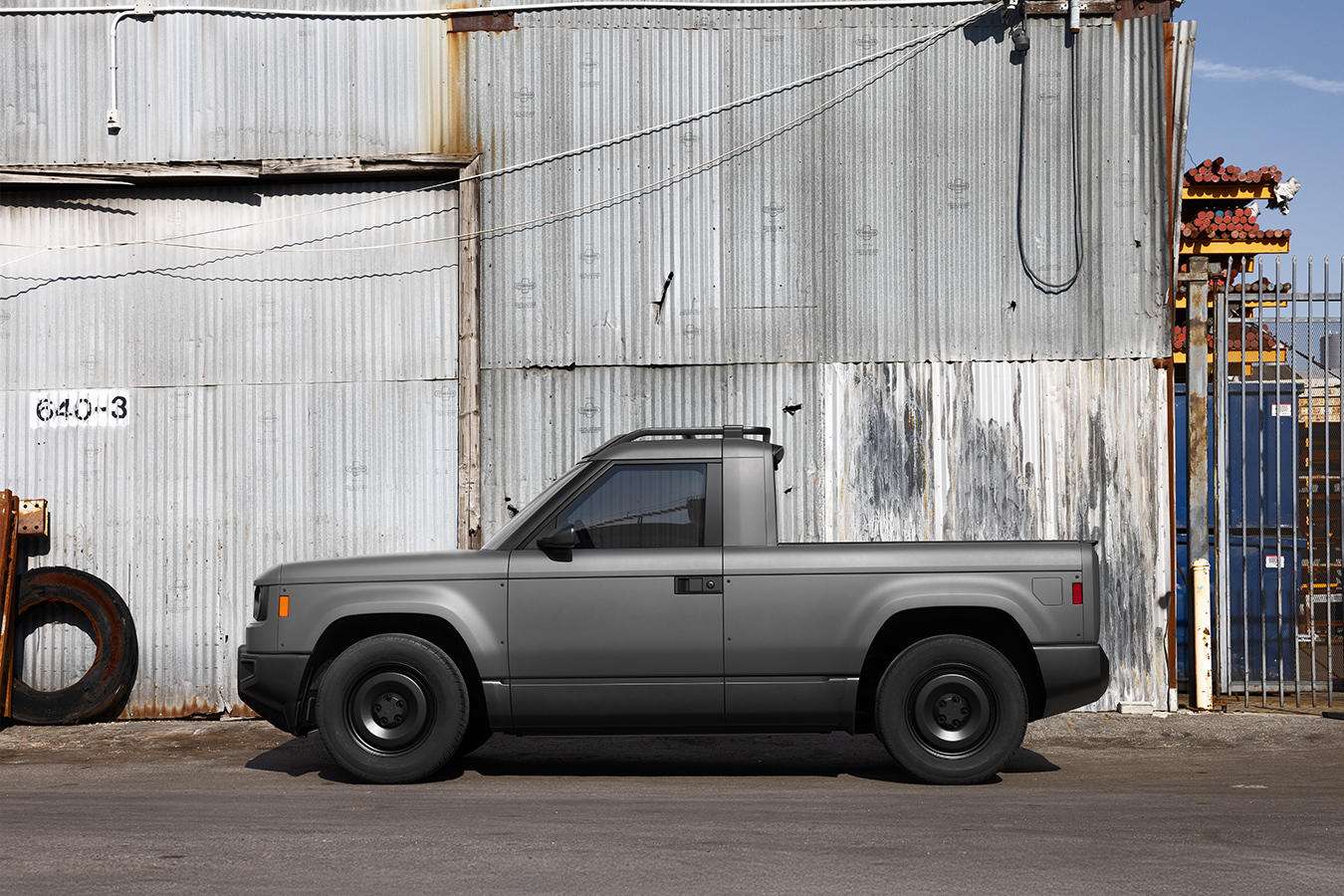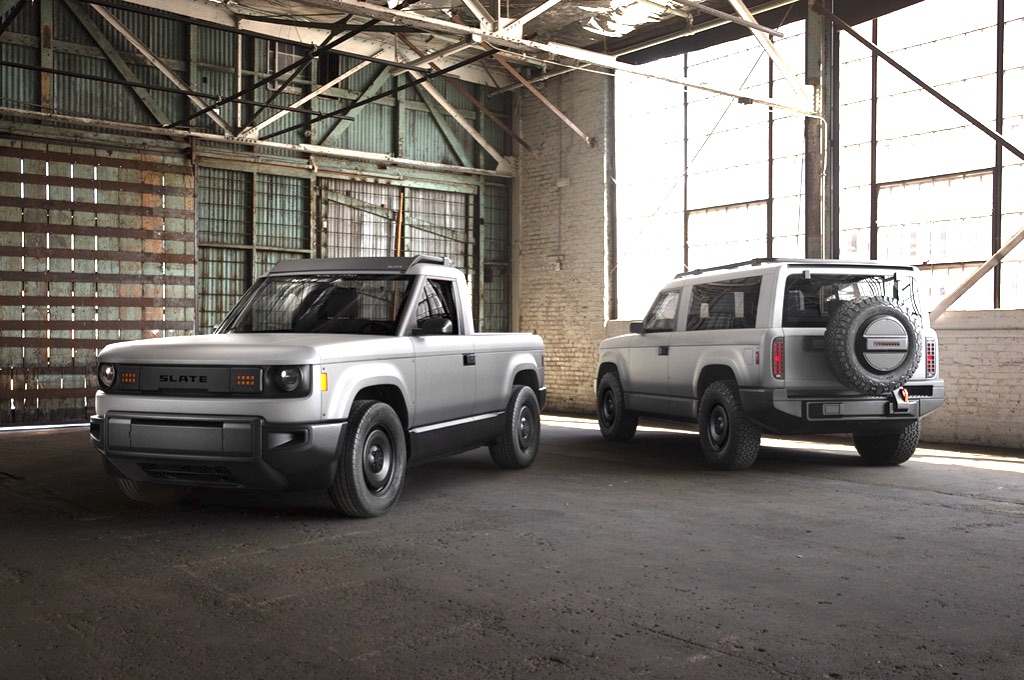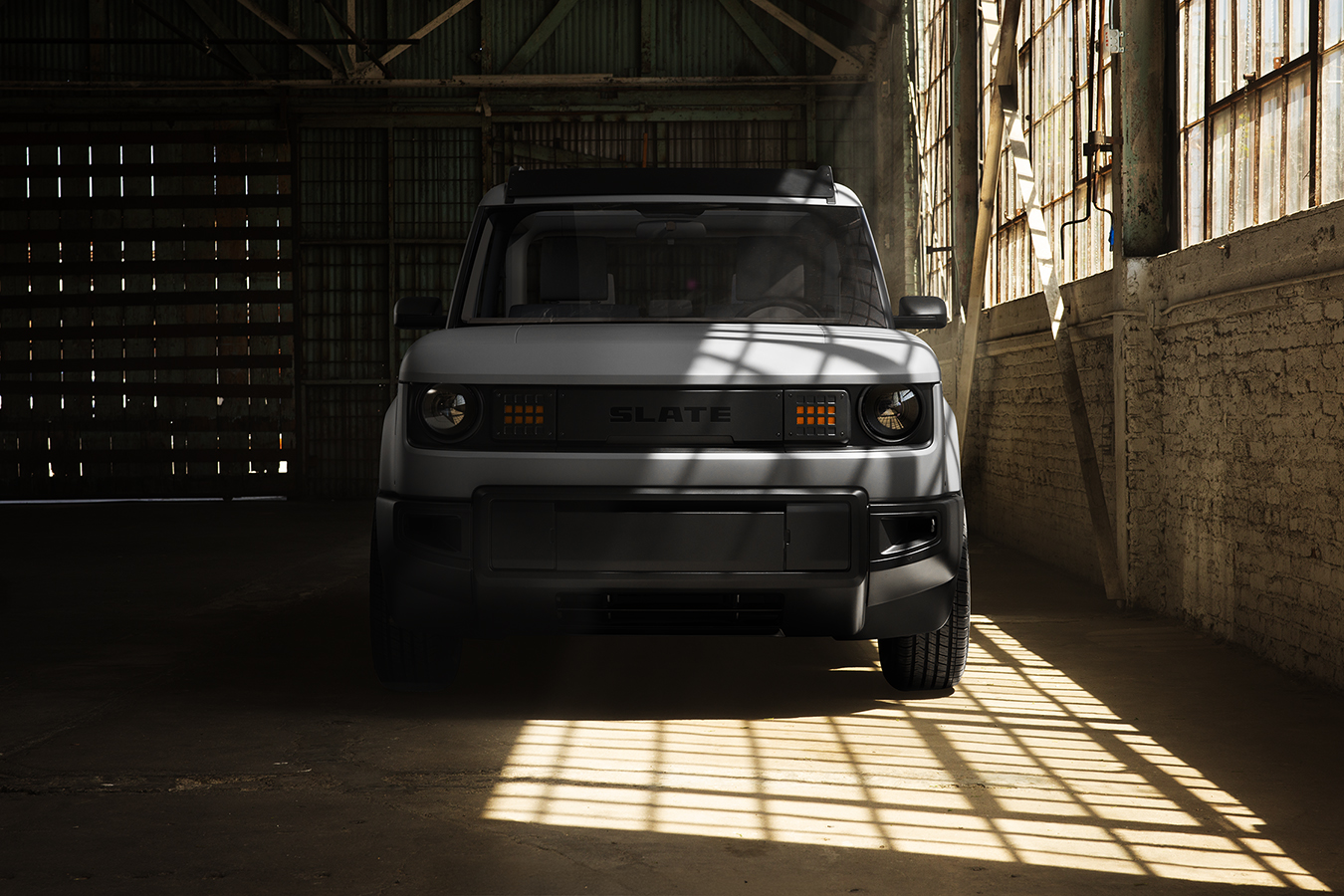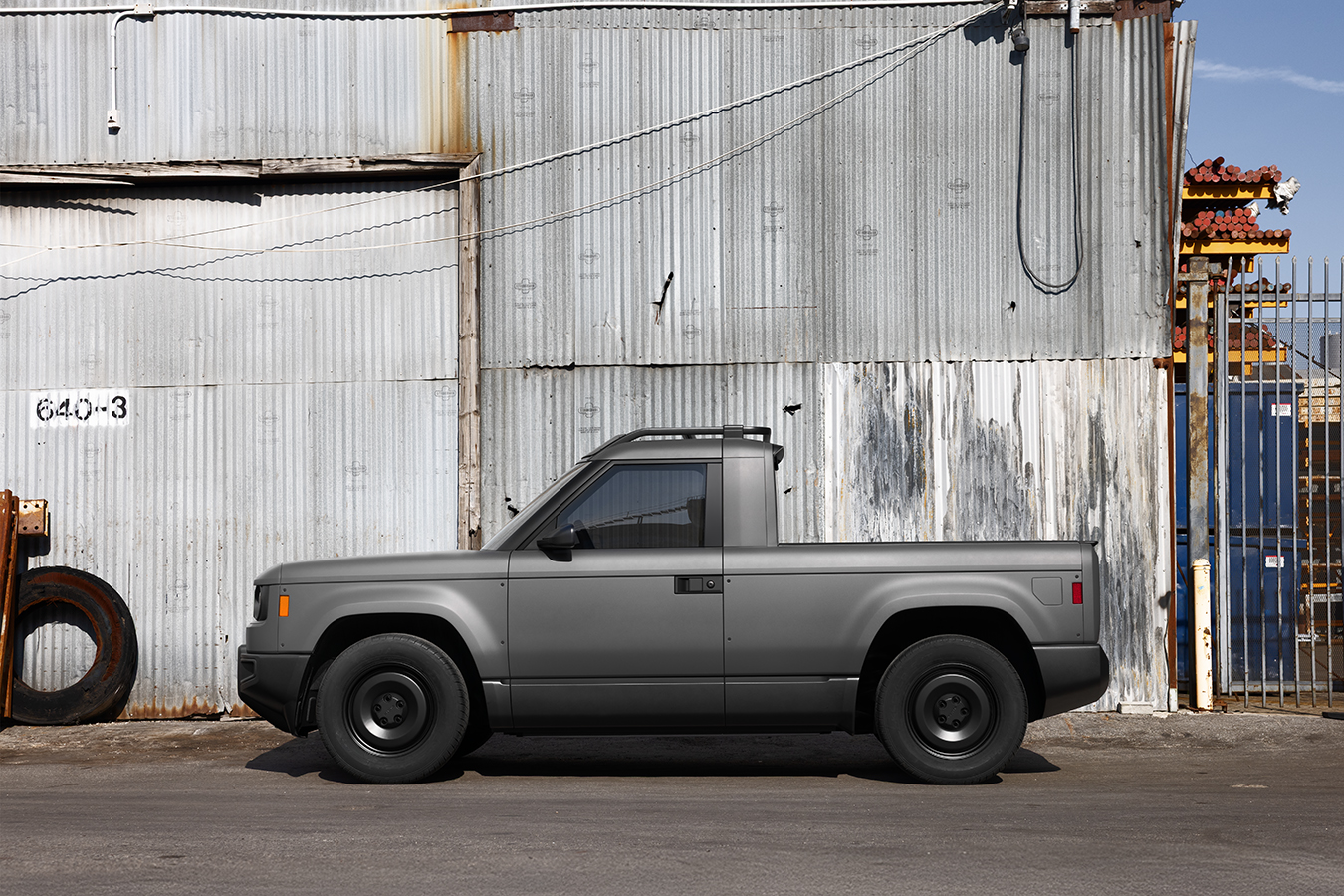Introduction and model history
Slate Auto is the latest electric disruptor to emerge from the United States - and it has some big names behind it. Based in Michigan, the heartland of American automotive manufacturing, the company is backed by investors including Amazon founder Jeff Bezos. The team itself brings credibility with its CEO - Chris Barman - a Chrysler veteran with almost 20 years under her belt, while Slate’s head of design Tisha Johnson spent 17 years at Volvo. The Slate Truck is their first model: a compact electric pickup designed with modularity at its core.
The big idea? When it rolls off the production line, every Slate will be basic grey and identical. Until you get your hands on it and then it becomes whatever you want it to be. Fancy an SUV? Prefer a fastback? Maybe a beach buggy? No problem, there’s an Ikea style flat pack you can order and simply bolt onto the back to transform your vehicle - the team assured me you won’t need a set of spanners or an engineering background to fit the packs at home.
There’s also a whole world of different coloured wraps, decals, accessories and upgrades to play around with. Think of it as Lego for grown-ups: Slate gives you the pieces, and you put it together.
Sized at around 4.4 metres long, it’s nearly a metre shorter than conventional pickups such as the Ford Ranger or Toyota Hilux, making it more manoeuvrable and better suited to urban and suburban life. In a US market that buys nearly three million pickups a year, Slate is aiming to carve out a niche with something fresh, affordable and customisable - this is the polar opposite of the Cybertruck.
Range, battery and charging
Two battery options are available: a standard 53kWh pack offering around 150 miles of real-world range, and an 84kWh upgrade extending that to roughly 240 miles. Those numbers won’t trouble long-range EV SUVs or trucks, but Slate’s compact proportions and lightweight construction make the most of the energy on board.
Charging performance is solid rather than spectacular. The onboard 11kW AC charger suits home or workplace charging, while DC fast charging peaks at 120kW, allowing meaningful top-ups on longer journeys.
The charging port is conveniently positioned, and although Slate hasn’t confirmed features like vehicle-to-load, the platform has been designed with modular upgrades in mind. The use of NMC battery chemistry should also offer good efficiency and energy density for this class of vehicle.
Practicality and boot space
Think of the Slate as a “diet pickup”. It captures the shape and spirit of a truck, but with far less weight and capacity. Payload tops out at 650kg - significantly lower than workhorses like the Ford Ranger - but still enough for DIY duties, outdoor kit, bikes, camping gear and most lifestyle users.
The flat bed is wide and easy to load, and switching from truck to SUV or fastback configurations simply involves removing the rear screen, installing the modular kit and clipping the screen back into place. Safety has been carefully considered too: if you add rear seats, the roll cage accessory includes integrated airbags and sensors that prevent the vehicle from operating unless everything is correctly installed.
The lightweight plastic body panels are 3D printed and fully replaceable, meaning repairs, upgrading and restyling should be cheap and easy. If you want your Slate to look different every year - or change with the seasons - you can make it happen.

Interior, design/styling and technology
Inside, the Slate is a celebration of simplicity. If you miss the days of straightforward dashboards and physical buttons, this will feel like a breath of fresh air. There’s no giant central screen and no complicated infotainment system; instead, your phone is expected to handle navigation and media, with an optional iPad mount available.
Manual window winders return (yes, really), though electric windows can be added as aftermarket accessories - you can even spec one for you and leave the passenger with a winder!. A small digital cluster provides essential information, including the feed from the mandatory (in the US) reversing camera, as the Slate has no central display.
Quality is intentionally functional rather than plush. Storage is good - if you want to spec it - while the seats are comfortable enough for commuting. It won’t be to everyone’s taste, but that’s the point - Slate is giving buyers a blank canvas.
Motors, performance and handling
Power comes from a single rear-drive motor delivering 200hp, more than enough for a compact pickup. The 0–60mph time of around eight seconds is genuinely respectable, and the low weight should help the Slate feel nippy around town.
Ride and handling will be tuned for comfort and simplicity rather than high-performance thrills, but the relatively small footprint means it’s easier to park and thread through tighter roads than full-sized pickups. Chunky tyres and optional accessories like tow bars and running boards add visual toughness without compromising usability.

Running costs and pricing
The headline figure is extraordinary: Slate aims to sell the truck for under $25,000, making it one of the most affordable EVs in America and by far the cheapest electric pickup. Even with the large battery and body-kit options (around $5,000 for a full SUV or fastback kit), it dramatically undercuts rivals.
But the temptation to spec your Slate with decals and accessories will no doubt push the price up for most buyers.
Finance costs should be low thanks to the simple construction, and running costs will benefit from the efficient motor and lightweight plastic body panels - which can easily be swapped out at low cost if you prang one.
Once fully launched, UK pricing and warranty details will be key, but the early signs point to a genuinely low-cost, low-stress electric ownership proposition.
Verdict
The Slate Auto pickup is an idea the car industry should have come up with years ago: a small, light, affordable EV that owners can configure, rebuild and redesign as often as they like. It delivers something fun and engaging in a market often dominated by overly complicated, overly expensive - and overly large - EVs.
No, it won’t suit builders hauling one-tonne payloads or drivers covering hundreds of miles a day. But that isn’t the point. Slate is building a lifestyle EV for ordinary people, and doing it with charm, creativity and genuine innovation.
If it hits its price target and delivers on its promises, the Slate could become one of the most influential electric vehicles of the decade. And yes - I’m already lobbying the Slate team for a European launch.























